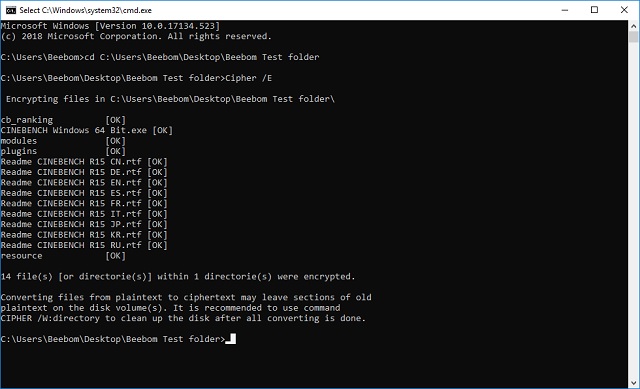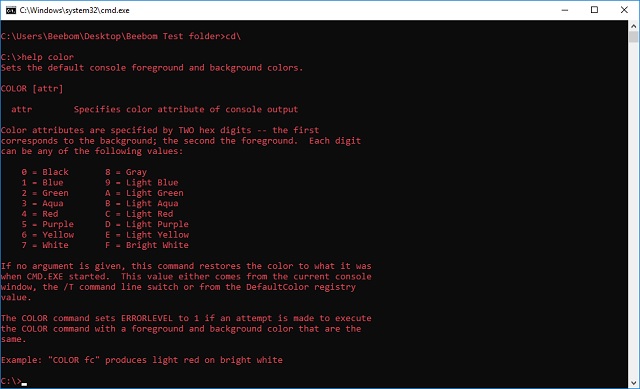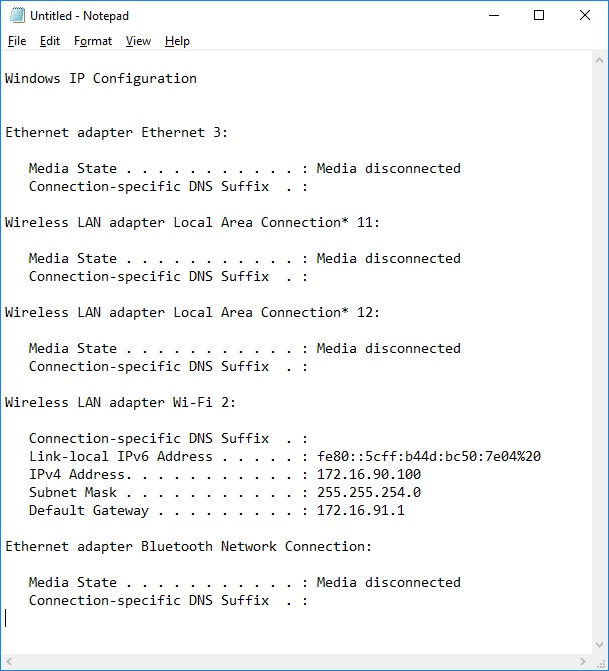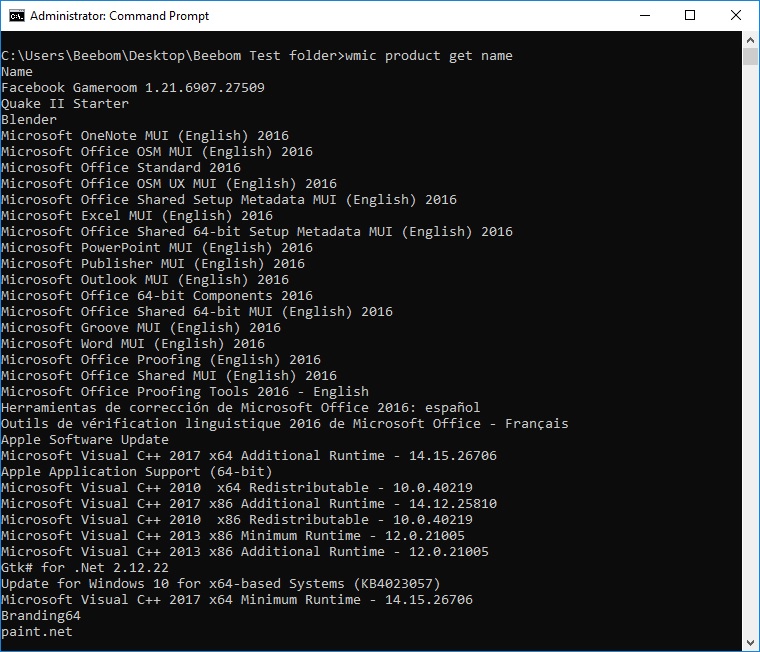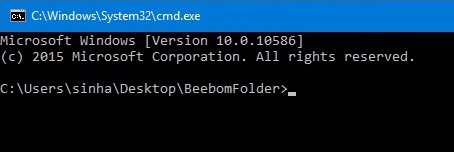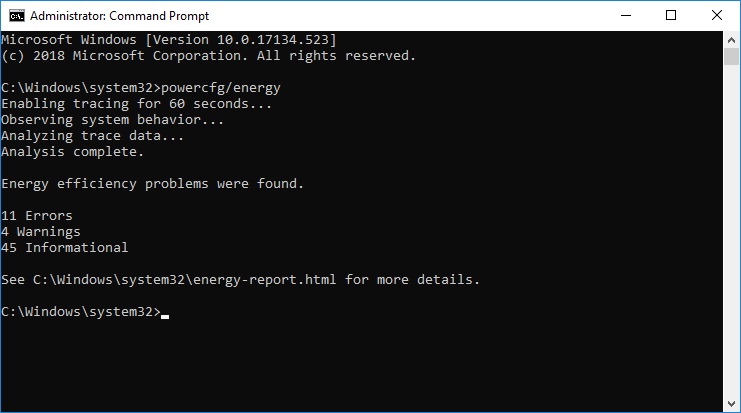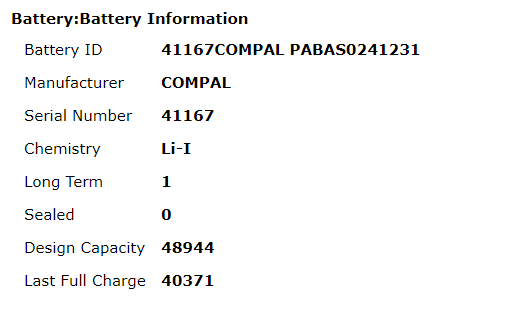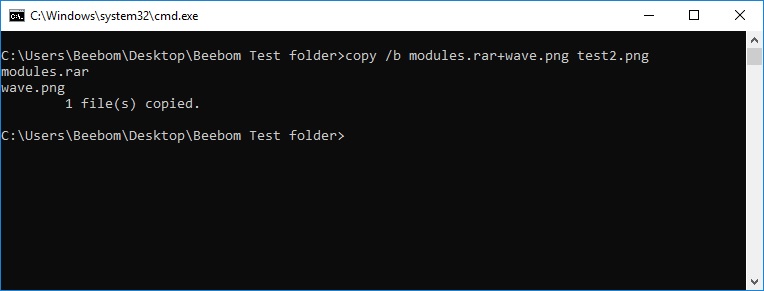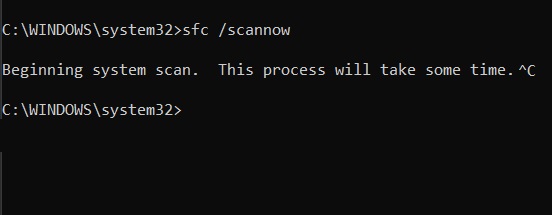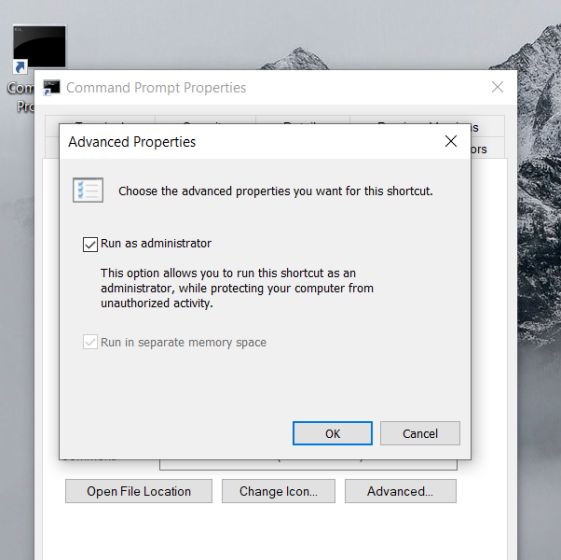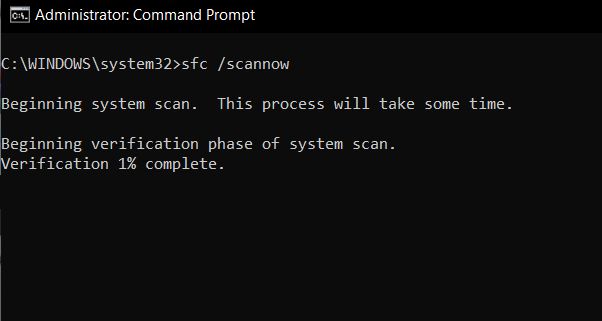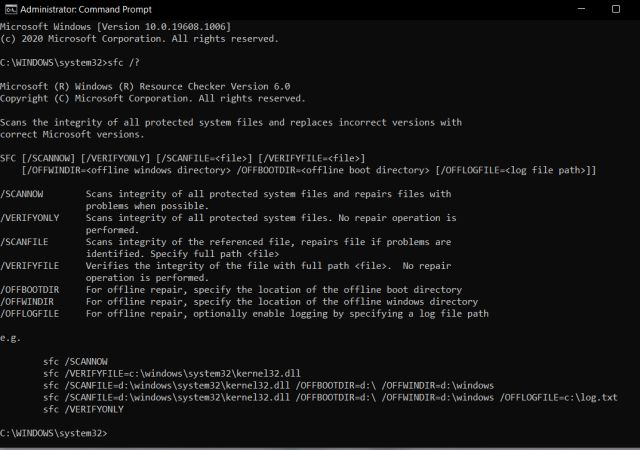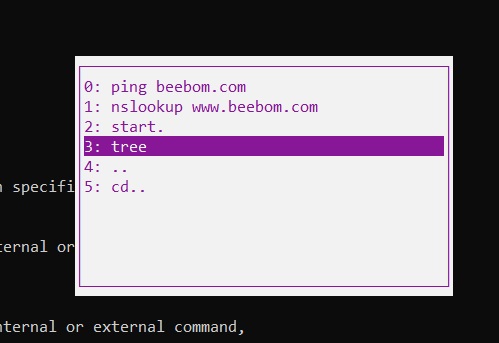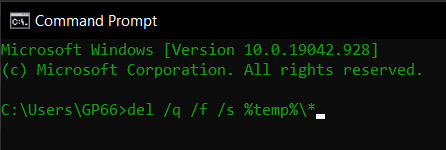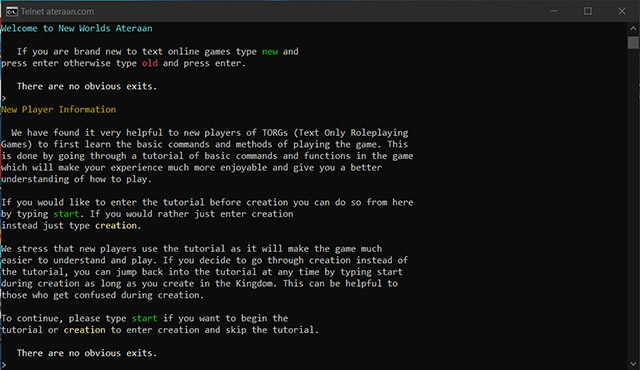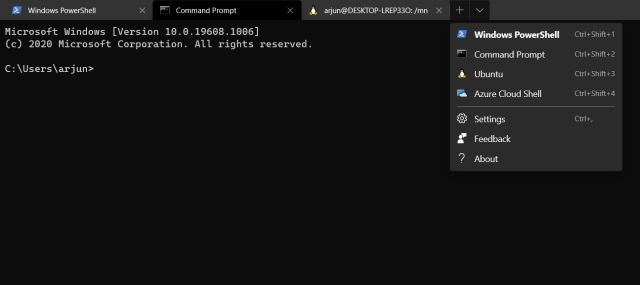Best Command Prompt Tricks (2022)
Before we get to our list, don’t forget to read our article on Windows 10 beginner tips if you are new to Windows 10 or want to learn about its key features. Now, let’s dive in and check out what all you can do with Command Prompt.
1. Encrypt Files Using Command Prompt
One of the most useful things that you can do using the Command Prompt, is encrypting your sensitive data. Encryption is a way to prevent others from taking a peek at your data, and it’s a really important part of ensuring (to some extent, at least), that your files are only yours. With this simple Command Prompt trick, you can easily encrypt files on your Windows PC.
Simply launch the Command Prompt, and change your working directory to the folder where your files are. This can be done by using the “cd” command. Once you’re done, type “Cipher /E“, and hit Enter. This will encrypt all the files that were inside the folder.
Note: If you try and open these encrypted files, they will open normally for you, however, any other user will not be able to view the files, unless they log in using your account. So make sure that you have a password set.
2. Change the Color of the Command Prompt Window
The Command Prompt window can be unexciting with the default black background and light gray text color. But Windows does allow you to change these colors to suit yourself and make things a bit more intriguing.
Launch CMD and Right-click on the title bar Click on “Properties” and in the separate window that opens, click on “Colors”` Here you can choose the colors for the screen text or background as well as for the popup text and background, and also change the transparency of the CMD window After you’re done choosing the most fitting colors for your personality, Click OK
Note: There are a lot of other colors available, and you can check out the entire list by typing “help color“.
3. Change the Prompt Text in Command Prompt
When you first open Command Prompt, the default text of the prompt is very boring. It does reflect the current working directory that the user is in, but it sure could use some customization. If you would like the prompt in your cmd window to say something other than the default, you can use the following trick.
Launch Command Prompt, and type “prompt” followed by the text that you want. Make sure you add “$G” to the end, to ensure that there is always the “>” sign at the end of the prompt, and you know where your command begins at.
Hit Enter, and you will see the prompt in the cmd window change to your custom text.
Note: There are some more options like “$G” available, and you check out the entire list by typing “help prompt“. Also, you can reset the prompt back to its original state by typing “prompt” and hitting Enter.
4. Change the Title of the Command Prompt Window
When you launch Command Prompt, you must have seen that the title bar reads “Command Prompt”, or maybe “Administrator Command Prompt”, if you launch it with Administrator privileges. While that is okay, but if you have a lot of cmd windows open, and each of them are working on a different task, then this “Command Prompt” title is not helpful at all. Fortunately, you can change that too.
Open Command Prompt, and type “title”, followed by the text that you want the Title bar to read.
Hit Enter, and you will see the Title of the cmd window change to the text that you entered.
Note: The title changes back to “Command Prompt” once you quit cmd and relaunch it.
5. List Every Driver Installed on Your Windows 10 PC
If you’re trying to troubleshoot an issue or merely looking for a list of all the drivers on Windows 10, there’s a command prompt trick you can use. Follow the steps below to see the list of drivers:
Type in driverquery /FO list /v in CMD, and you will see a list of drivers on your screen.
If you want, you can also copy this output into a text file for easy viewing later. Use this command to save the drivers list to a document:
6. F1 to F9 Keys are Shortcuts in CMD
All the function keys on your keyboard are also shortcuts for various Command Prompt functions. Here’s what each function key on your keyboard does in CMD:
F1: Tap or hold this key to retype your last command letter by letter. F2: Copies the current command up to a specified character. F3: Retypes the entire previous line F4: Auto-deletes the current command up to a specified character. F5: Similar to F3, but lets you cycle through previous commands. F6: Enters the EOF indicator into CMD. F7: Opens a list of previously entered commands. F8: Similar to F5, but doesn’t stop at the end of your command history in the session. Instead, it goes all the way to the start. F9: Enters a previous command by entering a number associated with that line.
7. Hide Folders using Command Prompt
While there is an easy way to hide folders on Windows by using the properties pane of the folder and checking the checkbox that says “Hidden”, the method is not very useful as the folders hidden using this method can easily be viewed if the view options are changed to “Show hidden files and folders”, making it a pretty useless feature. However, just like you can hide folders using Terminal on Mac, using this cmd trick, you can hide your folders in such a way that they will be completely hidden, and Explorer won’t be able to display them at all. Simply follow the steps outlined below:
Launch Command Prompt, and navigate to the directory where your target folder resides. Type “Attrib +h +s +r folder_name“, replacing the “folder_name” with the name of the folder that you want to hide, and press Enter.
You can now check that the folder is indeed hidden inside Windows Explorer and can not be seen by anyone. To unhide the folder, you can use the command “Attrib -h -s -r folder_name“.
Note: Hidden folders can be viewed using the cmd command “dir /AH”.
8. Copy Command Output to Clipboard
If you have ever tried to copy stuff off the Command Prompt, you must have realized that it is exceedingly difficult, not to mention un-intuitive. However, with this simple trick you can copy the output of any command that you want, directly to your computer’s clipboard, and you can then paste it into any text editor that you want.
Launch Command Prompt and type the command that you want to copy the output for, followed by “| clip“. For example, I’m using the command “ipconfig | clip“. Hit Enter, and you will see that the cmd window shows no output.
Open a text editor, such as Notepad, and press Control + V, and you can simply paste the output of the command directly inside Notepad.
9. List all Installed Programs
Another cool trick on the Command Prompt involves listing out all of the Windows 10 apps and programs that are installed on your PC. This is particularly helpful if you need to uninstall a program using the Command Prompt. To list out all the installed programs, simply follow the steps outlined below:
Launch Command Prompt, and type “wmic product get name“. Hit Enter, and you will see a list of all the programs that are installed on your PC.
You can also use wmic to uninstall programs, directly from the cmd window. Simply type “wmic product where “name like ‘%NAMEOFAPP%’” call uninstall /nointeractive” and hit Enter. Obviously, replace “NAMEOFAPP” with the name of the app that you want to uninstall from your PC.
10. Open CMD Window Inside a Directory
Let’s face it, the way Windows handles changing directories using the “cd” command is rather weird. Fortunately, there is a simple way to open Command Prompt windows inside a directory so you don’t have to change directories. This is a really handy trick, especially if the folders you want to access are buried deep inside the filesystem. To open a cmd window inside a directory, just follow the steps below:
Open the directory in Windows Explorer. In the address bar, type “cmd”, and hit Enter.
A command window will open inside the directory you had opened in Windows Explorer.
11. Generate Battery Health Report
Windows 10 lets you track vital stats related to the battery’s health by maintaining data related to the battery. This includes stats like factory specifications, full battery capacity, and the current capacity and these are updated with each session. You can generate a report about these stats by using a CMD command, which can be executed as follows:
Launch Command Prompt as an Administrator or change directory using cd C:\Windows\System32 Enter command powercfg/energy The system will take 60 seconds to analyze and then generate a report in form of an HTML documents
To access the report, you can head to this location on your Windows 10 computer:
As you can see in our laptop’s case, the battery’s capacity has dropped to 82% to what it was shipped with. If you want a step-by-step direction for generating battery health on Windows 10, click on the link to read the article.
12. Hide Sensitive RAR Files in Images
CMD facilitates a command which lets you concatenate or fuse two files into a single file. While this command comes in handy in merging the contents of basic file types such as TXT or CSV, you can also use the command to hide a RAR, ZIP, or another archived file inside an image or text file. To achieve this, follow these steps:
Open CMD in the directory which contains both files using the 10th item in this list or use the cd command to change the directory Use command copy /b <RAR_filename>.rar + <image_filename>.
Note: make sure you enter the RAR file first followed by the other file, else you won’t be able to recover the RAR package. The method also works on most common file types including documents and PDFs as long as you add the archive file first.
This will generate the result file, which in our case is test2.png
This PNG file displays as a normal image file but when you open it with WinRAR or any other extraction tool, it will extract the RAR file which is buried under the image file. This is a good way of saving your sensitive files from curious friends or co-workers or even prevent them from being misused even in case of a data breach.
13. Abort Command Execution
This is one of the best Command Prompt tricks and everyone should know about it. Say, you want to run a specific command but accidentally execute a different command. In that case, to quickly stop the command execution, simply press “Ctrl +C” together and the operation will be aborted instantly. How awesome is that?
14. Always Run Command Prompt as Administrator
For users who deal with system files and applications know that they always need elevated privileges to tweak and move around things. But on the other hand, Command Prompt always defaults to the normal account which makes it harder for users to gain Administrator access in the middle of an operation. So to save yourself from such situations, you can change the behavior permanently and run Command Prompt with Administrator privilege always.
Just search for “cmd” in the Start menu and right-click on it. After that, open its file location. Now copy the Command Prompt shortcut to your desktop. Move to desktop and right-click on the shortcut and open “Properties”. Here, click on Advanced and enable “Run as administrator”. Now onwards, open CMD from the desktop shortcut and it will always start with the Administrator privilege.
15. SFC /Scannow
SFC (System File Checker) is a relatively new addition to Command Prompt to keep your computer clean and bug-free. It’s a handy command-line tool that will help you fix many system issues. Just run sfc /scannow on Command Prompt and it will start verifying the integrity of all protected system files. Further, it will also repair the damaged files wherever possible. So in the future, if you face any issue, make sure to run this command on your Windows computer.
16. Find Information About Commands
Sometimes we run a command to achieve a certain task, but don’t know much about it. So to learn about specific commands, add /? at the end of any command, and hit enter. Command Prompt will give you a good overview of its usage and syntax. Take an example of SFC from the above point, type sfc /? and hit enter. It will tell you the sub-commands with examples, and what are the other commands related to SFC in a lucid language.
17. Command Line History
Many users are aware of the ‘UP’ navigation key to move forth and back between commands, but once you have executed too many commands then it quickly becomes a tiring exercise. Again, there is the doskey /history command to check all your executed commands in a chronological list. However, you can’t select the commands and execute them instantly. You will have to type it out manually and that is again, not the best solution. So if you want to quickly navigate through all your past commands with the ability to execute them immediately, just press the F7 key. You will get a separate window where you can choose a command and execute it then and there. For me, it’s one of the best Command Prompt tricks. Keep in mind, some users need to press the “Fn” key along with F7 to trigger this action.
18. Delete Temp Files to Clear Space
If you’re running low on space and urgently need to clear some trash out, getting rid of temporary files on your PC might be the swiftest action plan. Here’s what you can do to clean out temp files from your PC and regain a considerable amount of space.
Use the command del /q /f /s %temp%*
Use the command del /s /q C:\Windows\temp* (requires admin privileges) You can also use both the commands in one go by typing del /q /f /s %temp%* && del /s /q C:\Windows\temp*
19. Play an RPG Game in Command Prompt
Do you like playing role-playing games? If so, you should definitely check out Ateraan, which is a text-only role-playing game that works inside the command prompt on your Windows PC.
Type the command telnet ateraan.com 4002 into CMD and press enter. That will launch the game, and you can create your character and start your journey. GLHF!
20. Move to Windows Terminal
While Command Prompt is surely feature-packed and has its own userbase, but recently Microsoft announced a universal command-line tool for Windows 10 called the Windows Terminal. It runs Command Prompt in a tab layout and I think you are going to love the ability to execute multiple commands from just one window. Along with that, Microsoft has also merged Linux Terminal and PowerShell on Windows Terminal. Basically, you will have access to all your command-line tools side-by-side in just one window. That sounds exciting, right? So my recommendation would be to try out the new Windows Terminal and see if you like the new change.
Improve Windows Experience with CMD Commands
These 20 Command Prompt tricks, although basic and easy to implement, are very helpful. Using these tricks will allow you to use Windows 10 in a much more effective way. Also, it will give you access to many powerful features that you otherwise wouldn’t be able to use without installing (or buying) dedicated software. So, what are your favorite Command Prompt tricks that you use frequently and find useful? We would like to know about them, so comment them down below. Also, if you know of a CMD trick that you think deserves to be on this list, let us know about it as well.
